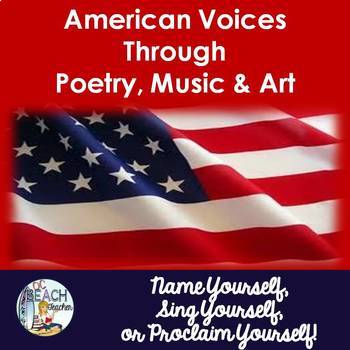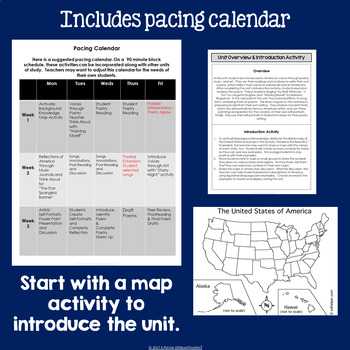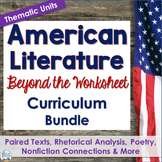American Literature Introduction - Poetry, Music and Visual Media Unit
- Zip
What educators are saying
Also included in
- Are you new to American Literature or tired of boring worksheets? Engage students with texts by American authors in lessons that use real-world learning connections, an appreciation for cultural diversity, and critical thinking skills. These activities for your American Literature Curriculum are orPrice $104.99Original Price $206.71Save $101.72
Description
This three-week unit is an excellent introduction to American Literature and meets the needs of visual, auditory, and linguistic learners. Students are introduced to American voices and ideals through poetry, music, and art. The unit sets high expectations for close reading and literary analysis while also encouraging creativity. Furthermore, the unit encourages critical thinking by requiring students to synthesize texts with universal themes and incorporates all English Language Arts Common Core strands.
This unit includes an enhanced version of my Identity Poem Freebie lesson with newly added peer review, proofreading, and rubric handouts. Poems included follow: "Naming Myself" by Barbara Kingsolver, "I Hear America Singing" by Walt Whitman, and "I, Too" by Langston Hughes.
When completing the “Reflections of America Through Music" portion of the unit, the teacher uses classic American songs from different genres and time periods. It’s strongly recommended that the teacher preview the lyrics to ensure the appropriateness of the songs for his/her students. Song recommendations include the following: "Star Spangled Banner" by Francis Scott Key, "Strange Fruit" by Billie Holiday, "This Land is Your Land" Woody Guthrie, "The Times They Are a Changin’" by Bob Dylan, "War Pigs" by Black Sabbath, "Born in the USA" by Bruce Springsteen, "Courtesy of the Red, White, and Blue" by Toby Keith, and "American Idiot" by Green Day.
In preparation for their own writing, students analyze non-print texts, specifically, self-portraits by famous American artists. Artists include the following: Mary Cassatt, Xavier Martinez, E.E. Cummings, Archibald Motley, and George Herriman. After analyzing the images, students use these paintings as inspiration for the creation of their own self-portraits. Finally, they use their self-portraits to brainstorm ideas for their poetry writing. The poems reflect their voices as individuals and as Americans.
Please note that texts from the public domain are included while links to online texts are provided for those poems and songs that are not in the public domain. A table of contents in the product preview provides more information on the unit contents.
If you would rather purchase individual lessons from this unit, you can find them at the links below:
American Voices Through Poetry
Do you need more lessons and activities to help you teach American Literature? I have a bundle that may interest you:
American Literature Curriculum Bundle
Meaningful and Memorable English Language Arts by © OCBeachTeacher
All rights reserved by author.
Limited to use by purchaser only.
Group licenses available.
Not for public display.






